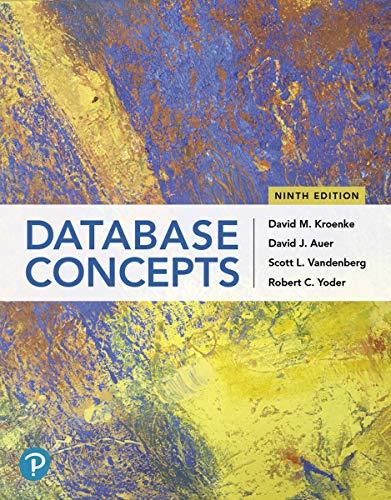Answered step by step
Verified Expert Solution
Question
1 Approved Answer
Phase 1 Rubric Each phase is graded over a series of categories. You will be judged on a scale of 1 - 4 for each
Phase Rubric
Each phase is graded over a series of categories. You will be judged on a scale of for
each criterion, where a corresponds to a a corresponds to a corresponds to
and a corresponds to If there is no work for a criterion or it is clear that even a
minimal amount of effort was not put in you will receive a for that section of the assignment.
Organization
Have a good organization including a logical layout, requirements grouped
by similarity, all sections present, requirements formatted to be easily understood,
uses good grammar, and has a single voice. No irrelevant data ie made up
satisfaction numbers
Most sections present, layout mostly logical and requirements are
easily understood. Lacks single voice and has some grammar issues.
Missing some sections, illogical layout, and requirements are hard to understand.
Lacks a single voice, many grammar issues.
Missing major sections, layout illogical, and requirements are not readable. Hard to
read and understand.
Use Cases
Captures core usage scenarios of the system. Present and well formatted diagram.
Descriptions are clear. Actors are clear and correct both in diagram and document.
Some mistakes in UC diagram or descriptions. Missing descriptions
or actors incorrect. Internal activities discussed in description.
UC is unclear and incorrect in several areas.
UC mostly incorrect.
ContextLevel Data Flow Diagram
Captures the system as one process and key entities that will interact with it
Minor errors in data flow.
Too many processes or incorrect entities.
Mostly incorrect.
ContextLevel Entity Relationship Model
Captures core entities in a wellformed diagram.
Most entities captured, or minor errors in relationships.
Missing major entities.
Mostly incorrect.
CPS Systems Analysis Document Structure
You should organize the document to fit the needs of your project and organization, the following
suggestion is based on the IEEE recommendations for software engineering requirements
documentation.
You are free to customize these templates for the needs of your project. Do NOT include
a section or a field in a requirement if it is not necessary or you do not have the right
information to complete it do not make up values
Introduction
a Purpose
i Summarize the project, including a short description of the purpose of the
system being built.
b Scope
i A clear description of what portions of this project that this document is
intended to cover.
c Definitions & Acronyms
i Define any terms used in the document that may not be obvious to the reader.
d References
i Any documents referred to in the creation of this systems analysis.
e Overview
i A short description of the rest of the document, detailing what each section
covers and where information may be found.
Overall Description
a Product Perspective
i An overview of the environment that this system must operate within,
including other software and hardware systems that will interface with this
system.
b Product Functions
i An overview of the features to be provided by the software.
c User Characteristics
i Description of the types of users that will interact with this software and
assumed properties of those users.
d Constraints
i Any constraints that have been placed on the project that are not, in
themselves, requirements
e Assumptions
i Any assumptions that are being made in specifying these requirements.
Systems Analysis
a Context level data flow diagram
b Context level entity relationship diagram
c Use Cases
i Scenarios
ii Diagrams
Step by Step Solution
There are 3 Steps involved in it
Step: 1

Get Instant Access to Expert-Tailored Solutions
See step-by-step solutions with expert insights and AI powered tools for academic success
Step: 2

Step: 3

Ace Your Homework with AI
Get the answers you need in no time with our AI-driven, step-by-step assistance
Get Started


